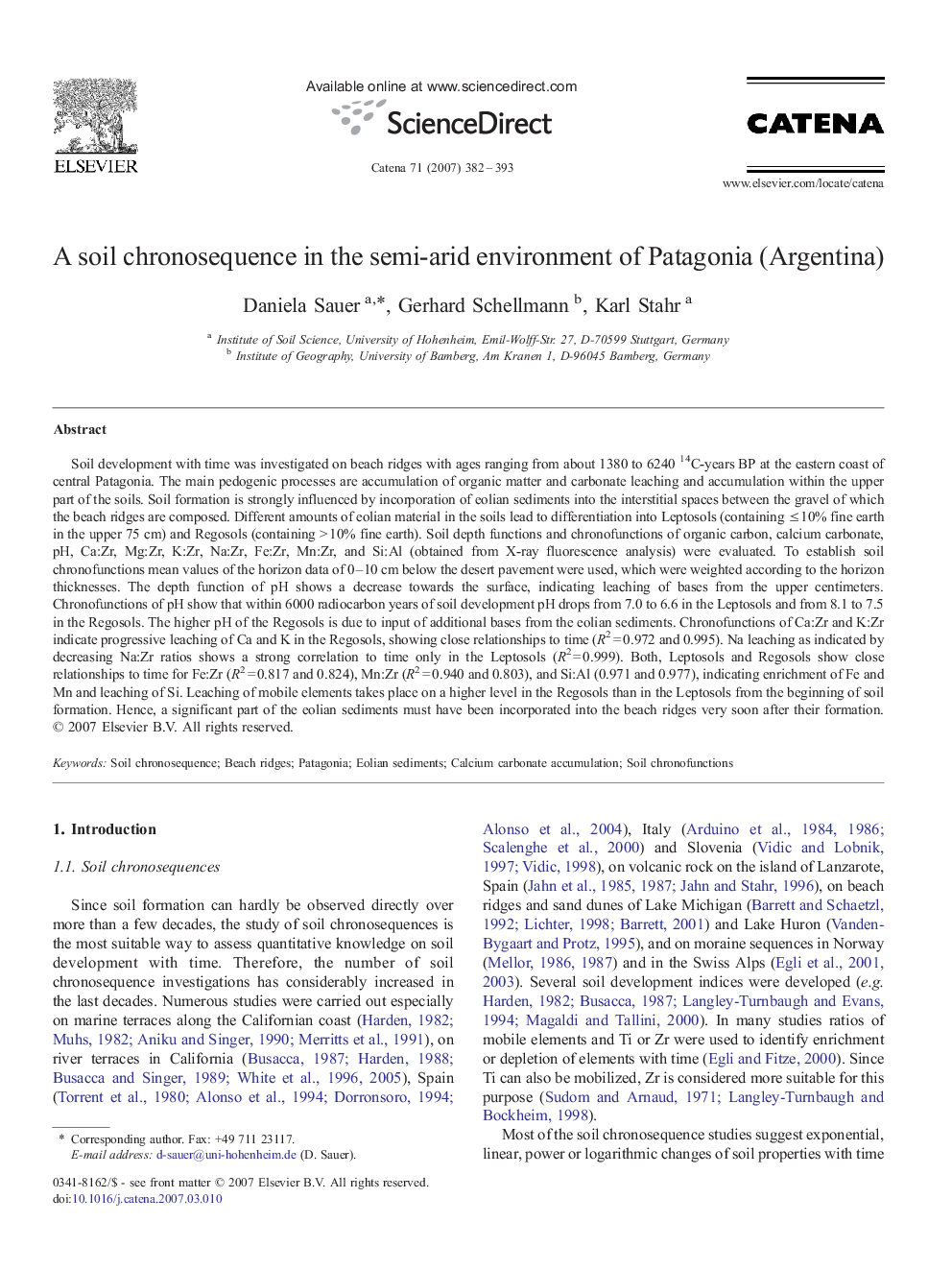| کد مقاله | کد نشریه | سال انتشار | مقاله انگلیسی | نسخه تمام متن |
|---|---|---|---|---|
| 4572587 | 1332186 | 2007 | 12 صفحه PDF | دانلود رایگان |
عنوان انگلیسی مقاله ISI
A soil chronosequence in the semi-arid environment of Patagonia (Argentina)
دانلود مقاله + سفارش ترجمه
دانلود مقاله ISI انگلیسی
رایگان برای ایرانیان
کلمات کلیدی
موضوعات مرتبط
مهندسی و علوم پایه
علوم زمین و سیارات
فرآیندهای سطح زمین
پیش نمایش صفحه اول مقاله

چکیده انگلیسی
Soil development with time was investigated on beach ridges with ages ranging from about 1380 to 6240 14C-years BP at the eastern coast of central Patagonia. The main pedogenic processes are accumulation of organic matter and carbonate leaching and accumulation within the upper part of the soils. Soil formation is strongly influenced by incorporation of eolian sediments into the interstitial spaces between the gravel of which the beach ridges are composed. Different amounts of eolian material in the soils lead to differentiation into Leptosols (containing â¤Â 10% fine earth in the upper 75 cm) and Regosols (containing > 10% fine earth). Soil depth functions and chronofunctions of organic carbon, calcium carbonate, pH, Ca:Zr, Mg:Zr, K:Zr, Na:Zr, Fe:Zr, Mn:Zr, and Si:Al (obtained from X-ray fluorescence analysis) were evaluated. To establish soil chronofunctions mean values of the horizon data of 0-10 cm below the desert pavement were used, which were weighted according to the horizon thicknesses. The depth function of pH shows a decrease towards the surface, indicating leaching of bases from the upper centimeters. Chronofunctions of pH show that within 6000 radiocarbon years of soil development pH drops from 7.0 to 6.6 in the Leptosols and from 8.1 to 7.5 in the Regosols. The higher pH of the Regosols is due to input of additional bases from the eolian sediments. Chronofunctions of Ca:Zr and K:Zr indicate progressive leaching of Ca and K in the Regosols, showing close relationships to time (R2 = 0.972 and 0.995). Na leaching as indicated by decreasing Na:Zr ratios shows a strong correlation to time only in the Leptosols (R2 = 0.999). Both, Leptosols and Regosols show close relationships to time for Fe:Zr (R2 = 0.817 and 0.824), Mn:Zr (R2 = 0.940 and 0.803), and Si:Al (0.971 and 0.977), indicating enrichment of Fe and Mn and leaching of Si. Leaching of mobile elements takes place on a higher level in the Regosols than in the Leptosols from the beginning of soil formation. Hence, a significant part of the eolian sediments must have been incorporated into the beach ridges very soon after their formation.
ناشر
Database: Elsevier - ScienceDirect (ساینس دایرکت)
Journal: CATENA - Volume 71, Issue 3, 1 December 2007, Pages 382-393
Journal: CATENA - Volume 71, Issue 3, 1 December 2007, Pages 382-393
نویسندگان
Daniela Sauer, Gerhard Schellmann, Karl Stahr,